 I had what may have seemed like a fairly “ordinary” conversation with a couple of yogis after class last week about whether to eat a “proper” dinner or not when I got home from teaching at 9:45pm that evening! I explained that making the decision to eat or not at this time of night is somewhat of a conundrum, because I do not like the feeling of going to bed too full, or too hungry – (I know, this is compelling stuff! Please do keep reading though, I am going somewhere with this, I promise!) One of them then suggested that maybe I set the intention this week to practice Yoga for when you are confused! This actually planted a little seed in my mind about how making decisions in life can cause us confusion – even if the decision is as small as choosing to eat a late dinner or not! Then a couple of days later, coincidentally, the other yogi involved in the conversation posted a quote on Instagram that read, “You’re always one decision away from a totally different life. Let that sink in”. These little inspirations (thank you Mark and Ange!), along with the hint of Spring in the air again, corroborated this week’s intention – Yoga for making decisions. It is estimated that the average adult makes about 35,000 remotely conscious decisions each day. This may seem a little far-fetched, but we cannot deny being faced with a never-ending stream of decisions from the moment we crawl out of bed in the morning, to the moment we eventually enter a blissfully choice-free sleep (full bellied or not!). The choices we make throughout our day will shape how our day pans out, and will also affect other’s daily experiences too. Each decision, of course, carries certain consequences with it that are both good and bad. I would say I am a very indecisive person. I do not like making choices, even when it comes to the “small stuff”. It can make me feel anxious, and I get pretty overwhelmed when there appear to be too many options to choose from. This is fairly normal for most of us though, because obviously we really do not want to make the wrong decision , resulting in an undesired outcome! We also all know that small choices can have big consequences, and we must not underestimate the butterfly effect (the phenomenon whereby a minute localized change in a complex system can have large effects elsewhere). (Side note: My boyfriend almost - jokingly, I think! -broke up with me once because I wouldn’t make a decision as to which ice-cream flavour I wanted. If I remember correctly, I ended up not having one! He was thrilled with this outcome as you can imagine!) Sometimes however, we face those big, life-changing decisions, and it can be totally daunting choosing what to do when we do not know what the consequences of our choice will be. But what our yoga can teach us is how to be more intuitive and mindful about our decisions so that we may choose better, resulting in better outcomes. An increased awareness and mindfulness of the vast quantity of choices that present themselves to us each day can help us navigate our daily maze of decisions and support our concentration. It may feel like sometimes we do not have a choice, and yes, we are of course limited by our options. We cannot choose vegan salted caramel ice-cream, if the shop is not selling it! However, our yoga practice can cultivate a sense of embodiment so that we can make decisions that come from our inner wisdom, and have more faith and trust in ourselves to realise that we, alone, are the master of our own destiny. Another great article on DoYouYoga outlines some tips when it comes to facing a big decision. I have listed them here, adding some of my own thoughts and ideas: 1) "Create space". Spring is filled with a sense of renewal. Our new year’s resolutions may now seem like a distant memory, but spring being the season of new beginnings, is an opportunity to start again. Cluttered rooms can make for a cluttered head and heart, so having a good spring clean of the space you inhabit to clear out what is not serving you in your life anymore and make room for what will, can really help when it comes to making clearer decisions. It is also just as important to make space in our internal environment as it is our external. When you are faced with making a big decision, take some time out for you – meditate, breathe, relax. The answer will flow through you more naturally this way, rather than being forced out. 2) "Clean diet and clean body means a clean mind and heart". Along with de-cluttering and spring cleaning our inhabited space, we also need to spring-clean our bodies if we are going to make a decision with a clear head. This does not mean we need to be restrictive or unkind to ourselves – we all choose to eat/drink things that are not very good for us sometimes. But if we can start to cut down on anything that directly alters our state of mind - loads of sugar, coffee, alcohol, and any other brain rocking substances – then we can create a sphere of self-care in which the answers can blossom. 3) "Feel it, don’t think it." When we are confronted with making a decision we can experience an exhausting thought-barrage that can get in the way of our intuition. As I mentioned above, our yoga and meditation practice can help to put us back in touch with ourselves, cultivating our intuition and enabling us to be guided more by our inner wisdom. Remember that Patenjali says that Yoga is the dialling down on the volume of the fluctuations of your mind to get into a more connected, intuitive space. 4) "Screw the advice." I cannot say I whole-heartedly agree with this one. When I do not know what to do, I phone my Mum! She always helps me to see things from a different perspective, and figure things out. But as we know, yoga is about uncovering those answers from within, and the above steps will help to strengthen that trust in ourselves and that deep understanding that we are totally capable of steering our own ship. Quite often, deep down, I already know what it is I am going to decide – I just needed Mum to validate it for me! 5) "Make it and move on." Once the decision is made, once you have felt it, then do not turn back. If you have already done the work to get you to that clear point where the decision has crystallised, there is no reason to go back over it. If your mind starts to wander over the terrain again, to rehash and worry, you will need to try and rein it in again. Of course it is scary making big decisions, but we cannot let fear get the better of us. Yoga helps us to soften through the fear. By practicing the above, we can begin to let go of the worry and be guided by our inner voice that knows just what the right answer is (even if it is not easy or pretty). None of us want to suffer or be unhappy with the choices that we make in this life, but sometimes we do make decisions where the outcome is not what we wanted, and then we just have to live with it. This is where last week’s intention of practicing “contentment” fits in. When we are more able to make a choice about something that has come from a place of intuition, we need to trust that whatever the outcome, it will all be OK in the end anyway. Namaste xxx
1 Comment
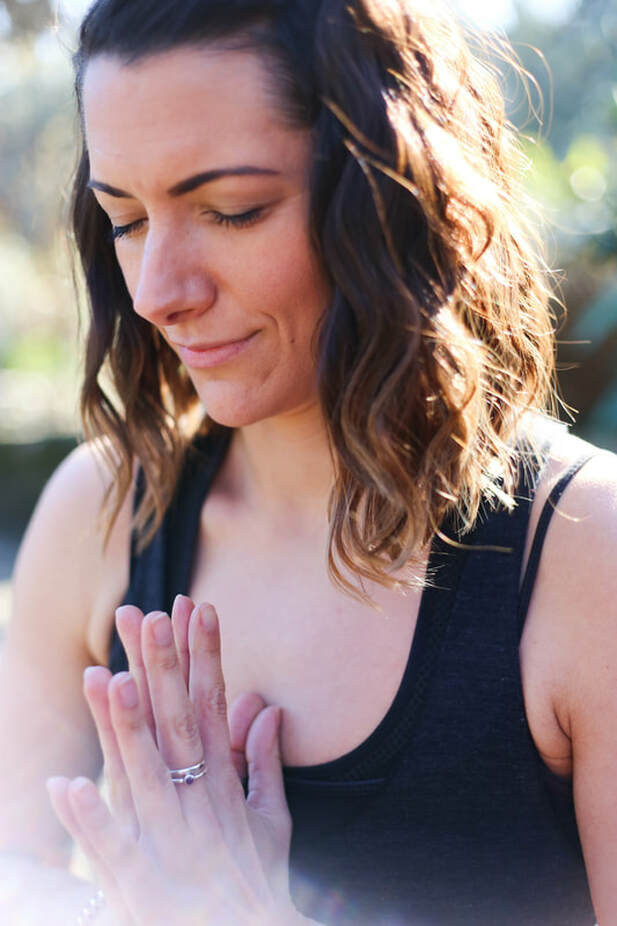 Photo by Sue Devenish-Meares Photo by Sue Devenish-Meares Over the last few weeks we have been exploring how yoga can help us deal with feelings of anger, overwhelm and the challenging situations that life throws at us. I have given you some anecdotal evidence to support how what we do on the mat can be applied off of the mat when we are confronted with feelings and situations that stimulate stress hormones, and trigger our fight or flight response - my trip to London, buying a house with the boyfriend, babysitting young children for the first time ever!! As I have mentioned before, our yoga practice can teach us to take a step back and assess situations for what they really are – impermanent, fleeting, and ever-changing. When life ebbs and flows, it can be challenging to stay connected to ourselves; particularly if we would rather ignore or escape the negative/intense feelings that arise in the face of challenging situations. Yet witnessing and understanding our thoughts and physical sensations during these times, enables us to use our own discernment to know what might be an appropriate reaction to the situation, and move with more equanimity through life’s ups and downs. One thing that I have not talked about though, is that amidst all of these challenging situations that can give rise to feelings of anger and overwhelm, there is a less obvious but very present feeling of contentment. In Sanskrit, the word for contentment is Santosha. Santosha is the second of the Niyamas (self-study and discipline) of Patanjali's Eight Limbs of Yoga (remember that the Yamas and Niyamas come before Asana (postures) on this eight limbed path). So on Friday, as I tucked in to my delicious Thai takeaway, sipped on a glass of chilled prosecco, and sat with a beautiful friend watching a film, I realised how sweet life really is; even when things do not quite turn out how we expected or wanted them to. Thinking about these recent events from another perspective, made me realise just how fortunate I truly am, and how everything is always OK in the end! Going to London is one of my favourite things to do, and I was extremely happy and excited to be there even if it was overwhelming and stressful at times – contentment. Over the past 8 months or so (as most of you know), my heart was set on opening up my own yoga studio and therapy room. But now my energies are being spent focusing on house-buying with my boyfriend, and as deflating as it is that my business aspirations have not come to fruition at this moment in time, I also feel relieved that I will not have the added pressure and responsibility of taking on a commercial letting, and I am really looking forward to this new chapter in our lives together – contentment. Babysitting was a brand new challenge for me. But the wave of panic that set in when my niece was screaming at me because she wanted chocolate and I had no idea how to deal with the situation, was soon replaced with the unconditional love I have for her, and the happiness she brings me. Whenever I think about my niece and nephew, I am filled with a sense of how lucky I am to have such wonderful, beautiful and entertaining children in my life, even when they are “kicking-off”!! – contentment. (I should probably give my Sister a shout out here too, and thank her for bringing two of the most precious things to me in to existence!!) Contentment is not the easiest thing to practise, and even the most “yogic” among us think that they could be happier from time to time. Sometimes a feeling of content it is extremely difficult to find, especially when it seems as if the universe is out to get us and everything appears to be going wrong! We also still need to experience stressful situations that give rise to intense, negative feelings, because if we only ever felt contentment, there would be no impetus to grow or change. But what yoga can do is to help us cultivate a sense of contentment within ourselves, instead of attaching to and judging these situations - we will experience a lot more peace and gratitude even when things are not going our way if we understand Santosha. Thus Santosha simply means accepting and appreciating what we have, and what we are already, so that we can move forwards from there. When we accept that we cannot always control external situations, it can be empowering and help us focus on what we can control: what goes on within us. Whatever we appear to be going through, we need to trust that we can ride the waves of life with a feeling of contentment; knowing that we have everything we need within us to move through changes and challenges with grace. So make the intention to appreciate yourself for what you are, how far you have come, and all that you have to look forward to, rather than getting bogged down with feelings of stress, anxiety, worry and overwhelm! Namaste xxx 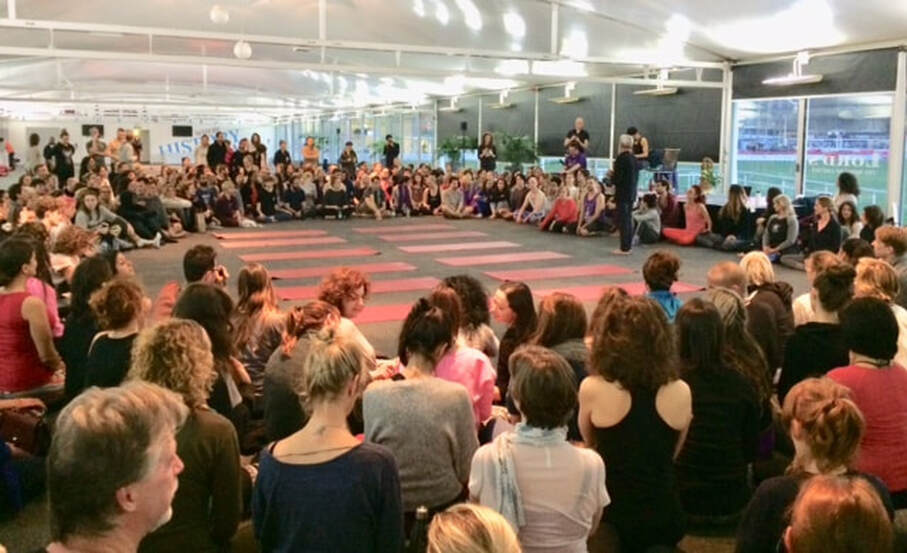 Last week I shared with you all my series of unfortunate events whilst travelling up to London and back, which left me feeling rather angry and irritable! Along with learning that it is always better to catch the National Express instead of the train when travelling to London(!), we learnt that anger floods the body with stress hormones. This triggers the fight-or-flight response, which if left to manifest, negatively affects not only the mind, but the physical body and our relationships as well. The long-term effects of uncontrolled anger include anxiety, depression, high blood pressure, headache, heart attack, and decreased immune response. Thus, I spoke about how important our yoga practice is in the face of anger, by enabling us to witness these unpleasant sensations when they arise, so that we can figure out a way to deal with them instead of simply acting upon them (e.g. lashing out). We worked on bringing a little bit of balance back in to our emotional bodies, and how to use our breath to bring us back in to a state of rest and digest, rather than fight or flight. One thing I briefly mentioned about the purpose of my trip was that it was to attend a Dharma Yoga workshop at Lord’s Cricket Ground. Sri Dharma Mittra is a Yoga master who has been teaching since 1967, and who created the Master Yoga Chart of 908 Postures. He is director of the Dharma Yoga Centre in New York City, and his teachings are very spiritual, based on advanced postures, the Yamas and Niyamas, and how to lead a content, simple and happy life. To be in London in the presence of Sri Dharma Mittra, along with about 150-200 others, was quite overwhelming for a number of reasons. There were also certain aspects of the workshop itself that I found very overwhelming. This got me thinking about this week’s intention - Yoga for when you are feeling overwhelmed. Recently this is a sensation I have been experiencing a lot. My to-do list feels like a mile long, and the thought of ticking off even the tiniest item can make my head ache and my brow-furrow (NB: ironically, “write blog” is one of these things!!) Sometimes I feel like a hamster on a wheel. Sometimes I feel like I am reaching the point of “burn out”. For me, this can manifest as lethargy, apathy, disinterest in regular tasks, and the sofa can become my best friend! This may relate to a few of you?! Many of the symptoms of overwhelm are similar to that of anger - anxiety, a racing heart, not being able to catch your breath! I noticed these creeping in at various points throughout the Yoga workshop. Just as with anger, when we are feeling overwhelmed, moving toward balance and a recalibration of your Prana (life-force energy), is key. Here are a few things that we can do to combat feelings of overwhelm: 1) Breathe This is probably the most important of all. When we are in a state of stress, we breathe at a more rapid and shallow pace, which sends signals to the brain that we are in danger. As I mentioned previously, this triggers the release of stress hormones, because the body is unable to tell the difference between a mental and a physical threat. These stress hormones are designed to help us to fight or flee when we are under emotional stress, just as they do when we are physically in danger. By consciously slowing our breath, and breathing into our belly, we allow our body to switch from our sympathetic nervous response (fight or flight) to our parasympathetic nervous response (rest and digest). This will give us a clearer head and can help to reduce anxiety, stress and tension. Yoga, too often, is shown as complex poses and athletic feats. The reality is that sitting and breathing, with an observant mind, is itself a transformative exercise. That is not to say that the physical aspect of Yoga is not also important when dealing with overwhelm. 2) Go for a walk or do some gentle exercise It may feel like we should skip our fitness routine when feeling like we have too many things to do. But taking the time to nurture and care for our bodies in this way reap so many benefits. So get outside and move your limbs. The motion will act as a distraction against your worry, and help balance the anxious thoughts with the positive ones. Exercise also releases those magical happy chemicals “endorphins”, which is one of the best remedies for overwhelm and stress. This will help you to think more clearly, and put you into a better, more positive state of mind. Moving also has a way of opening us up to new ideas. Exercising when we are feeling stressed is also a great way to burn through those stress hormones the body may be producing. When we are in our “fight or flight” mode, the body will release cortisol and adrenaline. If these hormones are not used up through physical activity they can stay in the bloodstream, causing damage. Doing some physical activity will burn through these hormones, leaving us in a better state of health. It is important to choose an activity that you genuinely enjoy, so that it does not feel like another chore. Just 15-20 minutes can be enough. Yoga poses such as forward folds to get fresh blood to the brain; side bends to kick start anything that is stale or stagnant in the body that needs to get moving; child’s pose to rest and restore; and neck stretches and chest openers to release tension around the jaw and shoulders, can all help us to feel less overwhelmed. 3) Set an intention or do something meditative You could sit with your back against a wall and set yourself the intention to listen to your body for ten breaths. This can give you more clarity and information about how you are doing than any rushing or busy-ness would ever do. You could calm and focus your mind by repeating a mantra to yourself. Our minds have a subtle connection with our bodies and spirits, and by training our minds with phrases and words, we can change our outlook on life and the people around us. Or you could colour, cook, or otherwise simply occupy your hands. Different cultures use meditation balls, mandalas or mala beads to help soothe the soul and the mind. Put something in your hands and set a timer for 10 or 20 minutes and let yourself wander off. Do not check your phone, do not look at a screen, and do not stray from the task until the timer is complete. Let the task absorb you. 4) Make A List It seems totally obvious, but stopping the cycle of nagging thoughts that often come along with the feeling of overwhelm by writing them down on paper is a highly effective technique. It can be very easy to get caught up in “circular” thinking when feeling that there are too many things on your plate, and this only adds to the unpleasant feelings of being overwhelmed. By purposefully interrupting your thought pattern and writing all of your tasks down on paper you will be sending a message to your brain that it does not have to keep reminding you of all you have to do. 5) Take a nap Just like exercise, it may seem counter-productive to go to sleep when you have so much to do! But when we are lacking sleep, our reasoning skills are diminished, our emotional reactions are heightened, and we are more susceptible to the feeling of being over taxed. By getting some rest, you will be better able to handle what you have to take care of, and will have a much more stable state of mind to work with. All it takes is 20 minutes to recharge our batteries. 6) Talk to someone We are social beings and social interaction is critical for our mental health. When we are feeling overwhelmed, it is really easy to get caught up in our thoughts and to be totally in our own heads. Connecting with a friend or loved one will help you to see things more clearly. Even if you do not talk about your issues, you will still be getting yourself out of your negative state by changing your environment. 7) Hug someone! Studies have shown that just 20 seconds of cuddling will encourage your body to produce oxytocin, which is the “falling in love” chemical. This will leave you feeling more capable and less frantic! Overwhelm is no fun, but taking the time to nurture ourselves when we feel this way, can make a world of difference. Each one of these practices is a means to connect you to your breath, awareness, mind, and the world around you. Doing any one of these when we are feeling stressed and overwhelmed can help us to start to see the world as it actually is around us, not as our minds pretend it to be. So do something really nice for yourself the next time you are feeling overwhelmed and see how it works to change your outlook. Namaste xxx 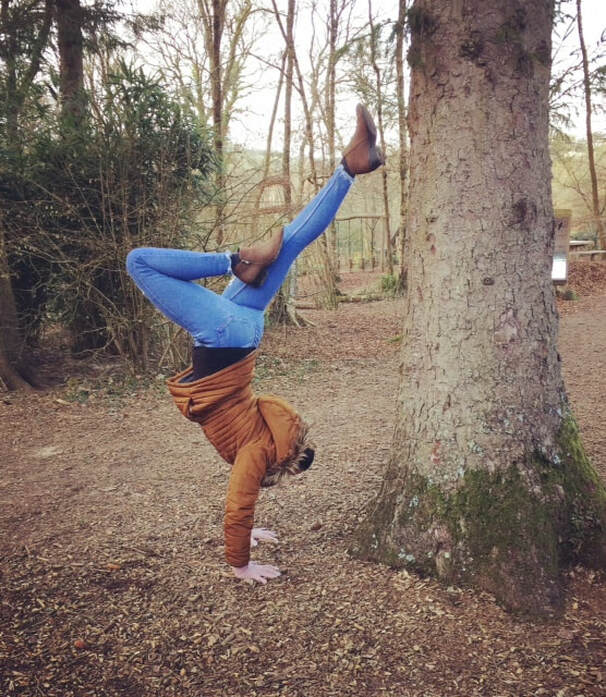 I imagine that a lot of us will come up with similar descriptions or notions here. But none of our ideas will be exactly the same, and we will probably end up with lots of differing opinions. Surely, this means that there is no universal right or wrong answer when it comes to understanding what Yoga is? Google “what is Yoga” and you will find that it is described as “a Hindu spiritual and ascetic discipline, a part of which, including breath control, simple meditation, and the adoption of specific bodily postures, is widely practised for health and relaxation”. However, in the modern western world, a lot of “Yoga” that is practiced today has lost this deep connection to its spiritual and/or philosophical origins, and instead focuses more on the physical and somewhat aesthetic aspects of the practice. This is not necessarily a bad thing, but it could be the root cause as to why many of us are confused over what actually constitutes “Yoga”? Ultimately, in the 21st century, it does not really matter what “Yoga” is. In today’s world, Yoga can be anything to anyone at any time! That’s the magic of it. As with all of history’s culture, Yoga has evolved, changed and developed over thousands of years, and has had to adapt to modern day living, otherwise there would be no place for it in the here and now. Yoga is a journey unique to each and every individual who decides to practice it – hence “Yoga” meaning many different things to many different people. I went to an Ashtanga Yoga workshop at the weekend. If you are not sure as to what Ashtanga yoga is, I have explained it in brief on my “Yoga” page. However, what is interesting about this practice, (and not explained in my short website summary) is that it was born out of the ancient yogic text that we touched upon a couple of weeks ago – The Yoga Sutras of Patenjali. Although “Ashtanga Yoga” itself is not specifically mentioned by Patanjali in the Yoga Sutras, the word “Ashtanga” is a Sanskrit term that means "having eight limbs or components”. The eight limbs of Yoga in the Sutras are: Yama (universal morality) Niyama (self-study and discipline) Asana (posture) Pranayama (breath control) Pratyahara (control of the senses) Dharana (concentration) Dhyana (meditation) Samadhi (union with the Divine) What this means is that when the practice of Ashtanga Yoga was developed by Sri K. Pattabhi Jois and T. Krishnamacharya in the 20th century, it was modelled on these eight limbs - making it a very traditional, ancient and sacred discipline. However, the emphasis of Ashtanga yoga is on the correct performance of the third limb (asana) as a means of achieving all of the other limbs, eventually reaching Samadhi. Sri Pattabhi Jois taught that a person must first commit to daily asana practice in order to make the body strong and healthy. With the body and sense organs stabilised, the mind can be steadied and controlled (remember Patenjali’s Yogas Chitta Vritti Nirodhah). For me personally, Ashtanga’s “traditional” approach to practicing yoga, with its strong focus on the physical aspect, is what I equally like and dislike about it. On the one hand, I love the fact that Ashtanga is rooted in an ancient Yogic philosophy dating back thousands of years – this gives it a really “authentic” feel. Being strong physically appeals to me because I love to challenge my body. Also, being of a modern western mind-set myself (unfortunately!), I like that the sequence is always the same so that you can measure “progress” in your practice. However, turn this on its head (pun intended!) and the practice can feel dated and irrelevant to the modern day person living a modern day life, and can perpetuate low self-esteem when the postures seem physically impossible and far out of reach! It is one thing to be disciplined enough to get up at 5am and practice for 2 hours, 6 days a week, in the warmth of an Indian climate, without the distraction of laptops, tablets and iphones - but it is a completely different ball-game attempting to do this on a cold winter’s morning, or after a long day sat in the car, or at a desk staring at a computer screen! Don’t get me wrong, there are plenty of dedicated Yoga practitioners in colder Western climates that do practice this intensely, and I have complete admiration for them; but my point is that we do not live the same lives as our ancient Indian Yogi ancestors (we do not even live the same lives as yogis did 100 years ago when yoga was first introduced to the west)! So as I said previously, if Yoga is to survive the modern world, it needs to grow and adapt, baring relevance today, and most importantly, being accessible to all. All of this also got me thinking about the reason as to why people think that they are “not very good at yoga”! I hear this said way too much in my classes, and I flinch every time! Of course, when we are basing our capability to “do Yoga” purely on its physical element, then most of us will feel like we are not very good at it. This goes hand in hand with my post last week about body image, and basing our self-worth on what we look like/what our bodies are capable of “achieving”. Comparing ourselves to what we see on the cover of yoga magazines, social media, or even to our favourite Yoga teachers, will only perpetuate the idea that we are not “good enough” at yoga. But if there is no universal right or wrong answer to what Yoga is, how can one be good or bad at it?? Does not being able to do a handstand without the help of a wall (or a tree!), or to cross your legs behind your head, or balance on your arms for 5 hours mean you are not very good at yoga? I suppose it depends on what Yoga is to you? And in the west, we are programmed to be fixated on the external appearance of things, and to be goal-orientated, so more often than not we measure our ability to “do yoga” on what we can physically “achieve”. However, the word “yoga” itself comes from the Sanskrit word “yogah,” which means “to yoke or to unite.” And in all of Yoga’s ancient texts, the goal of the practice is to uncouple oneself from the material world and unite with the Divine/universe. Not to be able to stand on one’s hands or touch our feet to our heads! I am not saying that I am united with “the Divine” myself either (yet!) - But for the sake of my own personal growth, healing, and yoga journey, I have to let go of the idea that Yoga is all about the pose! I simply have to believe that there is much more to yoga than meets the eye – otherwise, I am totally rubbish at it and wouldn’t be a “good” yoga teacher!! I am continuously pondering what yoga is to me, and I encourage you to do the same. At its core, Yoga is about allowing ourselves to “go with the flow”, and in light of this, the practice itself, like our lives, is always in a state of flux. Thus, we do not need to tie ourselves down to believing one particular notion of what Yoga is – this will change in line with what we need from the practice at that moment in time. We need to let go of the notion of being either “good” or “bad” at Yoga. I am therefore never really 100% sure what yoga is to me, and don’t know if I will ever be! The more I delve in to it, the less clear it becomes! But where’s the fun in having all of the answers all of the time and knowing everything?! As Einstein says, “the important thing is not to stop questioning”. Namaste xxx 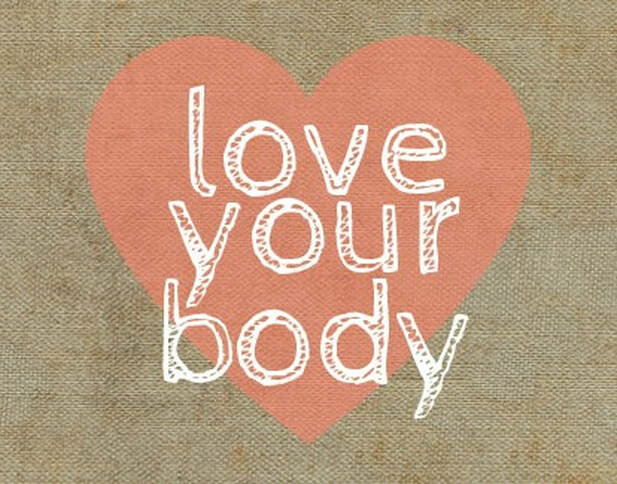 All of us struggle to some degree with body image issues, and this is something I have battled with ever since I was a little girl. I grew up in an extremely loving household, whereby I was always told I was beautiful by my mum, dad, sister, other members of the family, and even friends. However, equally, these people were always concerned about weight and body image – it felt like a natural part of life growing up. It dominated conversations between my mum and aunties, my dad would comment on weight gain/loss, and most of my friends (myself included) would frantically count calories, workout obsessively, and continuously worry about how we looked. When I was at primary school, I developed a lot faster than most of my friends. I had a lot of what was termed “puppy fat”. As a result, I was bullied both on and off the playground. I began to feel like I was different to most of the other girls my age; and boys would pick on me because of my weight. My earliest memory of feeling insecure about my body was when I was 7 years old. I was so embarrassed by my body that I was the only one in my class to ask to get changed for P.E. around the corner from everyone else so that none of my classmates could see me - only to have the other class come out and laugh at me!! “Fatso”, “sumo” and “chubby”, were just a few of the names I was called throughout my primary years!! By the time I got to secondary school, I had lost weight (that is, I had grown out of the “puppy fat”). But as we all know, going through puberty is a whole other ball-game! Teenagers will always find something to pick on you about - your hair, your clothes, your shoes, your make-up! Along with this, music channels, beauty magazines, girl bands, American television programmes like Friends, and Sex in the City, were all extremely popular when I was a teen; then came the rise of social media! All of which were a constant stream of social messages that reinforced all the ways my body was not good enough. To this day, I still battle with body-confidence issues. Ironically, I have chosen a career in an industry fraught with conflicting messages about health, beauty, self-love and acceptance! Sometimes I feel that the thing I come to for help (Yoga), is the same thing that can at times perpetuate my self-doubt and self-deprecating thoughts about my body. An article on DoYouYoga quite rightly points out that “for years, mainstream yoga publications, websites, and clothing companies, have carefully crafted a very specific image of what yoga looks like… Pictures of very thin attractive, flexible, and almost exclusively Caucasian women are being disproportionately featured in advertising and promotion for yoga. Very rarely do you see an “average” or “regular” sized person doing a simple yoga pose”… “Society creates this impossible image so companies can make money off your insecurities about yourself and your body—insecurities that this type of marketing helped create in order to sell their products” It seems that the way the western world works is to perpetuate the idea that “you are not quite enough” – if you change something about yourself, if you “transform” in to something different, something better, then you will be worth more, loved more, more successful. So from a very young age, one of the first things I believed about my body was that it was “fat” and I needed to change that. Thus, at the age of 14, I turned to yoga as a means of losing weight and toning up. But I learnt so much more about myself and the practice of Yoga along the way. I have enlisted the help of an article on the Yoga Journal website to articulate the ways in which Yoga can help you and I remember that we are perfect just as we are. Firstly, it is important to note that basing your self-esteem on how you look is a sure fire way to create a negative body image. The unrealistic social expectations of how we should look cause a range of “heavy” feelings, such as discontent, embarrassment, insecurity, worry, shame, and an obsession with controlling weight, food, and exercise. Over time, these feelings lead to unhealthy beliefs about our self-worth. We will never be able to live up to the unrealistic photo-shopped ideal, so it is time to stop comparing ourselves physically to others, and focus on our values and gifts, such as being courageous, having a great personality, contributions to the community, and service to others. Here is a list of ways in which Yoga can help to heal negative body image and low self-esteem. 1) One of the first tenants of yoga is ahimsa (nonviolence) — do no harm to yourself or others. The media creating unrealistic images of beauty is harmful to us, and it is up to us to set those images aside, and to love and be kind to ourselves. We are beautiful as we are. 2) In our physical asana practice, we need to focus more on what we can do and less on trying to be perfect at it. Mainstream media will continue to post picture perfect images, but we need to change the aesthetic and broaden the idea of what yoga looks like. 3) Yoga teaches us gratitude. We need to start being grateful for our wonderful bodies in all their glory, and thank them for all of the incredible things they do for us. As we work through our physical practice we can tune in with the ways in which our bodies help us balance, twist, sideband, backbend, and forward fold, and we can build a new awareness of our body’s power. 4) Yoga helps us change our mind-set so that we can see beyond our limiting beliefs about ourselves and turn them in to possibilities. It is so easy to focus on what’s “wrong” with our bodies, fixating on what our bodies can’t do. This negativity hardens our once playful and curious selves. Yoga poses can help us shed that hardened layer and create a safe space to “play.” No one is grading us on whether we can balance on one leg or not! Yoga encourages us to witness the self-talk that makes us doubt our body, and shift to language that embraces a curious spirit, approaching our poses from a playful mind-set versus one of perfection or ideals. 5) Cultivating this witnessing presence in our practice means that we are able to simply observe what comes up, without judging or criticising. Then we can begin to watch our bodies with compassion versus disdain. 6) Yoga teaches us to remain present. When we are caught in negative thinking about our bodies, we are not present. Instead, we are trapped in the past or future, comparing ourselves to how we looked last year or how we want to look next month. Feelings of guilt and shame often show up, causing us to lose connection with the present moment and making it even harder to feel confident in our bodies. Through breathing practices and yoga poses, we learn to practice presence - turning to our body to help soothe our mind. This is an essential tool in helping us calm spinning thinking about body image and other anxieties. Yoga helps us live in the moment and be content with exactly who we are. 7) Yoga helps us to clear the mental clutter that may have been suppressing wisdom and insights about why we struggle with body image. Such wisdom can get buried under the weight of shame and guilt and other feelings, or self-sabotaging behaviours. When we practice yoga, we are able to observe (not judge) the messages and lessons our inner wisdom gives us about our past experiences and habitual reactions and behaviours. This gives us the opportunity to both validate why body image issues exist and identify—or at least begin to consider—what might help us move away from body despair toward body affirming experiences, both on and off the mat. 8) During our practice it is important to remember to stay focused on what makes our bodies feel good. We are our own teachers, and our bodies are all unique and different from one another, so we need to learn to modify the postures so that it feels good for us. If your body doesn’t look just like the cover of Yoga Magazine, what does it matter?! So there we have it. Yoga, with its tenets of peace, self-compassion, and acceptance, is a path to softening and even transforming harsh beliefs about our bodies. Through the path of yoga, we practice harmony within, and strengthen our relationship with our body. Yoga has helped me massively on my path to healing these deep-rooted body image issues. But that demon still lurks within. So as I explained last week, just like Yoga, improving our perspective of our body is a life-long commitment that takes practice, determination, and patience. We must be committed to changing the way we think about ourselves, and “catch” ourselves whenever we have a self-deprecating thought, and replace it with a loving thought that nourishes us. Repetition, consistency, and time are essential to lasting healing. Namaste xxx  … Yoga is the stilling of the fluctuations of the mind. Recently, the “fluctuations” of my mind have been out of control. I have been feeling worried, anxious, stressed and overwhelmed. The spiralling thought mess has taken over! And the silly thing is, I know exactly why - a lack of meditation (I know - BAD YOGINI!!) In the Yoga Sutras of Patenjali, the practice of Yoga is explained as the stilling of the mind until it rests in a state of total and utter tranquillity. When we are in this state, we are able to see and experience life as it is – as Reality – because it is no longer coloured or clouded by our thoughts. The fluctuations that Patanjali refers to are a result of our desires, aversions, attachments, ignorance and the ego's sense of “I”, “me” and “mine”. So when the fluctuations of the mind are totally removed, we no longer have thoughts of good/bad, mine/yours, and we become totally at one with everything in the universe. We have no separation from our inner divinity and “the Divine”. This is yoga (“union”, or to “yolk”/“bind”). However, we all know that it is impossible to remove our “mind-chatter” altogether, because we are always thinking! What Patanjali is actually teaching us here has to do with a method of quietening, or stilling the mind through a system of practices that lead us to mental peace (asana, meditation, etc.) The reason life becomes a roller coaster ride of madness sometimes, and we can find ourselves feeling totally overwhelmed by our thoughts, is because most of us (myself included!) identify with the fluctuations of the mind so deeply that we can end up acting them out through our behaviours. And unfortunately, it is very easy to get stuck here. But when we do yoga and practice meditation, we start to become the witness of these fluctuations, rather than identifying ourselves with them. In doing this, we are less likely to believe our thoughts to be true, and more likely to see them for what they are: ever-changing, fleeting and transient in nature. In other words, they are not really true. They are merely a truth/reality we have manufactured ourselves in our minds! As we work to practice this art of quieting the mind, we need to remember a couple of things: 1) We must remain dedicated to the practice, as this leads us in a constant direction, and 2) we need to also practice non-attachment to the practice itself as this will alleviate a lot of the pain and suffering that will inevitably come our way when working towards self-realisation! I’m off to meditate… Namaste xxx. 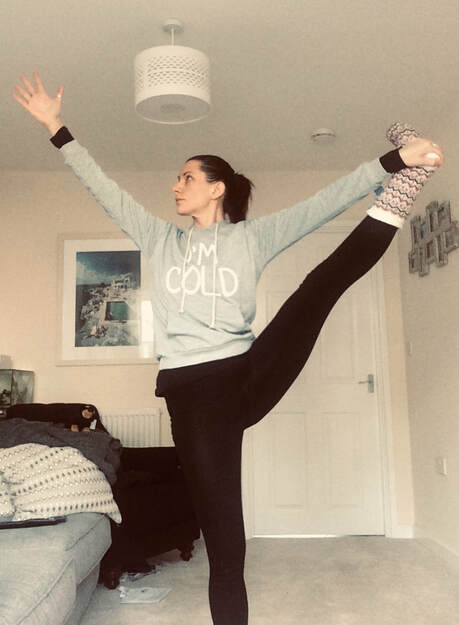 I am losing the plot! I could have sworn I wrote a blog post two-weeks ago on "Embracing the New Year"... but it turns out, I didn't! So this post will be three blogs rolled in to one... here goes! :-)... Throughout January I have been talking to you a lot about the idea of "mental time travel", whereby we tend to either reflect and potentially dwell on the past, or project our thoughts in to the future. Particularly at this time of year when we may have set New Year's resolutions or intentions, and we begin to think about how we can use last year's experiences and lessons to shape and mould our year ahead. It can be difficult to remain present whilst this is going on. And as much as it is important to have goals, dreams and ambitions (and to put things in to place to manifest these), it is equally as important to remember that ultimately neither the past nor the future actually exist! We cannot control what has been and gone, and we cannot foresee what is yet to come. So we need to learn to embrace whatever challenges may come our way, and our Yoga practice helps us do that in various ways. Having said that, as you know, last week I found myself feeling stressed!! It is stressful not being able to control particular desired outcomes from time to time. To not know which of your goals, dreams and ambitions may or may not come to fruition in the New Year, may cause a bit of anxiety. So again, we draw upon our Yoga practice for help. Which leads me on to this week's intention - Yoga for resilience! Resilience is defined as: 1) the capacity to recover quickly from difficulties; toughness; or 2) the ability of a substance or object to spring back into shape; elasticity. Psychiatrist Frederick Flach describes it as "the psychological and biological strengths required to successfully master change". There is a great article on Yoga Journal about learning resilience, which starts out by reminding us that "most of us hit an "edge" sooner or later", but that "this is always a crucial moment, because the choices that we make when we meet our edge help determine our capacity for that vital human quality known as resilience". It reads that "Resilience is essential; without a basic supply of it, none of us would survive the accumulated losses, transitions, and heartbreaks that thread their way through even the most privileged human life... But there also exists a deep, secret, and subtle kind of resilience that is the skill of stepping beyond your edge. This kind of resilience has less to do with survival than with self-transformation. It's the combination of attentiveness, insight, and choice that lets some people tune in to the hidden energy lurking within a crisis and use it as a catalyst for spiritual growth". "Our yoga practice is meant to teach us how to untangle (our) inner knots. Often, you don't realise how much difference your practice has made until the day that you find yourself dealing with a stressful situation without going into an absolute meltdown... There's a little bit of fear and irritation in your mind... but there's also a witnessing awareness, an inner compassionate presence, that lets you stay present with what's happening without getting sucked into the fear or the anger". Another article on Yogainternational.com says that "The challenge and unpredictability that comes with practicing yoga... teaches your brain how to flexibly adapt to change... the better your brain and mind are at adapting to change, the easier it becomes to meet stress head-on.... The trick is to befriend change and embrace the wobbling". If we simply "embraced the faltering and uncertainty of yoga (and life), there’s a good chance your body would relax, and your mind might begin to accept what is occurring in the present moment, rather than striving for "how things should be". You might even find yourself laughing instead of grimacing (or cursing under your breath)". "Facing challenge and flowing with what is, rather than trying to force what isn’t, is the key to building stress resilience and increasing your health and happiness", and "a yogi is someone who can turn every circumstance to his advantage", using stressful and emotional situations as an opportunity for personal growth. Namaste xxx 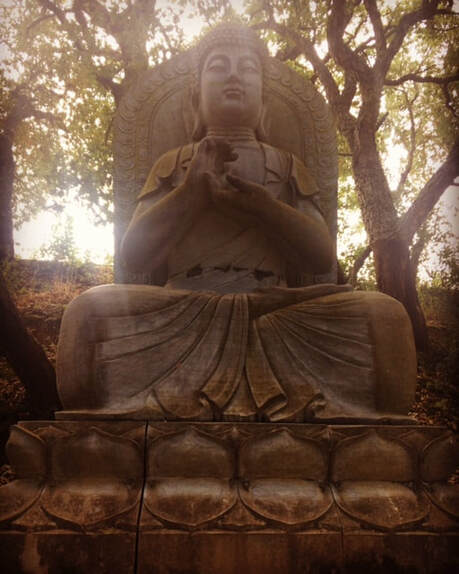 Happy new year everyone! I think most of us started easing back in to reality last week after being stuck in our twinkly little Christmas bubbles (or baubles as it were!) for the last couple of weeks. Sometimes, it is easier to start off gently when it comes to picking (back) up some healthy habits that may have gone out of the window during December, rather than punishing ourselves by going cold turkey (pun intended!) on January 1st. In light of this, we began with gentle practices last week when classes started back up again on Thursday 3rd. This week however, we will be focusing our intention more on kick-starting our new year by cleansing and detoxing ourselves after what was most likely a pretty self-indulgent December! You may have noticed by now, that your body will start to let you know when it is in need of some TLC again. Over Christmas, you may have started to feel sluggish and bloated, and lose your motivation and energy - the stodgy food and alcohol has started to take its toll, and it is time to get back to health. Also, for a lot of us, January feels like a fresh start. And as we all know that our mind and body are intricately connected, cleansing and detoxing the physical body is a great way to cleanse and detox the mind as well. This allows us to wipe the slate clean and begin again, with a sharper, more concentrated focus. So let’s get “back on track” again this week, and support each other on the path to physical and mental wellness in 2019. Namaste  On this day 31 years ago, I was born in to this world with a loving mother, father, and 8 year-old Big Sis to welcome me!! Over the years they have taught me how to love unconditionally, practice patience and gratitude, but most importantly, how to have a bloomin’ good time!! As a result, I have always loved my birthday. Especially being a December baby, because it means that celebrations can continue all through the party-season without being accused of just "milking it"! This week we are therefore celebrating birth. I know some people do not like to celebrate their birthday (see Grinches, Scrooges and Ba Humbugs in previous post!), but it is so amazing to be individually celebrated at least once a year, and reminded of just how wonderful, special, and truly loved you are. So please come and celebrate with me in class this week, and help yourself to a mince pie or a square or two of dark chocolate! Nama - birthday! xxx  Finally - December is here!! Not that I ever wish the year away, but December is definitely my favourite month! At last, it is more socially acceptable to get away with doing all of the Christmassy things I’ve been doing since mid-November!! In light of this holiday/party season, we are focusing our energy on enjoying ourselves in our practice this month. This is so that when we start to feel overwhelmed by a hectic schedule, stressing over buying Christmas presents, and frantically trying to get everything done before we finish work, we can remember to relax, go with it and enjoy the festive spirit! There can be a lot of negativity around this time of year. There will always be the Grinches, Scrooge’s and Ba Humbugs of this world! Yes, it is cold, dark and wet, but our yoga practice teaches us to adapt and adjust to our surroundings to help us cope and stay feeling positive during this time. Whilst it is extremely important to practice gratitude and compassion more so than ever at this time of year, it is also very important to not get too caught up in feeling sad and to remember to look after ourselves and have fun. WARNING: CHRISTMAS MUSIC WILL BE PLAYED IN CLASS THIS MONTH!!! Have fun, Enjoy, and be Merry and Joyful! Happy Christmas Everyone! Namaste xxx |
 RSS Feed
RSS Feed
